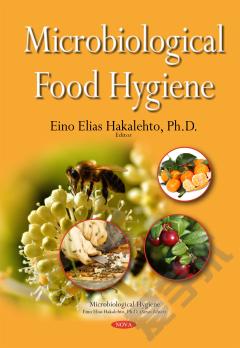Microbiological Food Hygiene
Microbiological Food Hygiene is a book about our clean and healthy nutrition from the sources of raw food materials into our homes. It associates nutrition to the functions of our alimentary tract and its microflora. They ultimately digest the food for nutrient uptake, as well as meet the challenges from the outside microbes. Both industrial food manufacturing and traditional means for hunting, fishing and gathering as well as the agriculture and animal husbandry are included from the hygienic point of view. Food hygienic quality during its production and preparation, distribution and catering are also focused on, as well as strategies for its maintenance. Besides our bodily source of energy and anabolism, food is a substrate for micro-organisms, both on its own and in our alimentary tract. Sometimes, the microbes cause spoilage, food-poisoning or diseases via food. Microbiological Food Hygiene introduces the common bacterial, viral, fungal or toxin agents of food-poisonings. In this book, the history of method development in food microbiology is surveyed, as well as the detection of food contaminants. Also, the follow-up of the effects of salmonellae, campylobacteria, Bacillus sp., staphylococcal, clostridial or other toxins, various food-poisoning zoonoses, dairy contamination, fish microbes, and several other forms of food contamination are included. Microbes can also be used for processing food for better diet and preservation, its improved constitution, and for adding taste or nutritional values into it. This book introduces also some more exotic cases of traditional foods and their contamination problems and preservation means, from the arctic areas to the tropics. They could serve as examples for modern homes and restaurants or large industrial kitchens. The positive contribution of microbial strains in binding valuable trace elements, such as selenium and other minerals is presented, as well as the probiotic activities of several microbes and their roles in maintaining the BIB (Bacteriological Intestinal Balance). Results on health promoting flavonoid substances and neonatal milk formulas are introduced. Methods for microbiological food diagnostics and quality monitoring are widely included, also with some actual problems as the spread of antibiotic resistant strains and some other emerging threats. These hazards are partially due to population expansion and global trade and travelling. Also, the industrial food manufacturing accelerates the buildup of some of the problems. Experts in microbiology as well as those working with food production and distribution in our societies need to keep up with the pace of various methods of development, such as novel genetic techniques or immunoassays, enhanced enrichment, volatile sensing, molecular diagnostics and many others. The influence of various microbes in foods and thereof is related to their metabolic capabilities, surface structures and the antigenic properties, biofilm formation, intestinal interactions, etc. These phenomena are profoundly discussed in the Microbiological Food Hygiene. Food sterilization, hygienization and preservation techniques, large kitchens and catering services, and other practical issues are also introduced. The importance of theoretic background is to be estimated on the basis of everyday activities in the versatile and fascinating field of food production and hygiene.
{{comment.content}}








 京公网安备 11010802027623号
京公网安备 11010802027623号